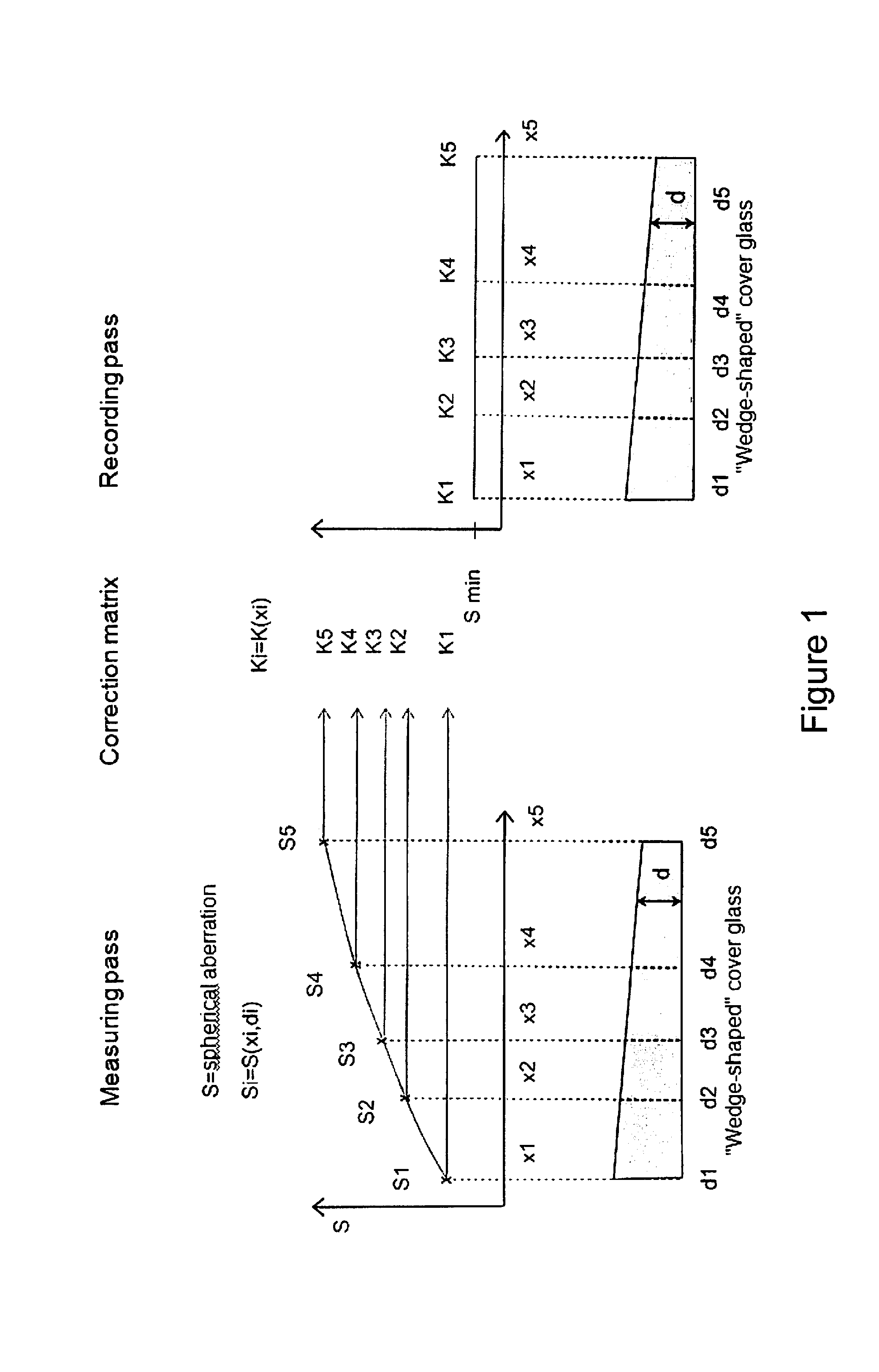Method for the correction of spherical aberration in microscopic applications
a technology for microscopic applications and aberrations, applied in closed circuit television systems, instruments, television systems, etc., can solve the problems of requiring more time, requiring manual adjustment, and local variation of spherical aberrations, so as to minimize the number of recordings needed for the correction algorithm, the effect of maximizing the time resolution
- Summary
- Abstract
- Description
- Claims
- Application Information
AI Technical Summary
Benefits of technology
Problems solved by technology
Method used
Image
Examples
Embodiment Construction
[0063]Spherical aberration is a function of a plurality of parameters. In a typical experiment, the spherical aberration is determined by the position x, y, and z, the wavelength λ, the cover glass thickness d, the index of refraction n1 of the cover glass, the index of refraction n2 of a specimen, and the penetration depth 1 into the specimen, resulting in the following dependencies:
Sijk=S(xi,yi,zk,λij,lik,di,n1i,n2i, . . . ),
where i is the index for the particular measuring / recording position, j is the index for the particular wavelength, and k is the index for the axial position, for example within a z-stack. The exact determination and correction of the spherical aberration and the setting of the correction matrix are dependent on the correction procedure used.
[0064]In a first example, the correction is described using a correcting objective by turning a correction ring. In this case, the position of the correction ring corresponds to a spherical aberration to be corrected. Thus...
PUM
 Login to View More
Login to View More Abstract
Description
Claims
Application Information
 Login to View More
Login to View More - R&D
- Intellectual Property
- Life Sciences
- Materials
- Tech Scout
- Unparalleled Data Quality
- Higher Quality Content
- 60% Fewer Hallucinations
Browse by: Latest US Patents, China's latest patents, Technical Efficacy Thesaurus, Application Domain, Technology Topic, Popular Technical Reports.
© 2025 PatSnap. All rights reserved.Legal|Privacy policy|Modern Slavery Act Transparency Statement|Sitemap|About US| Contact US: help@patsnap.com


